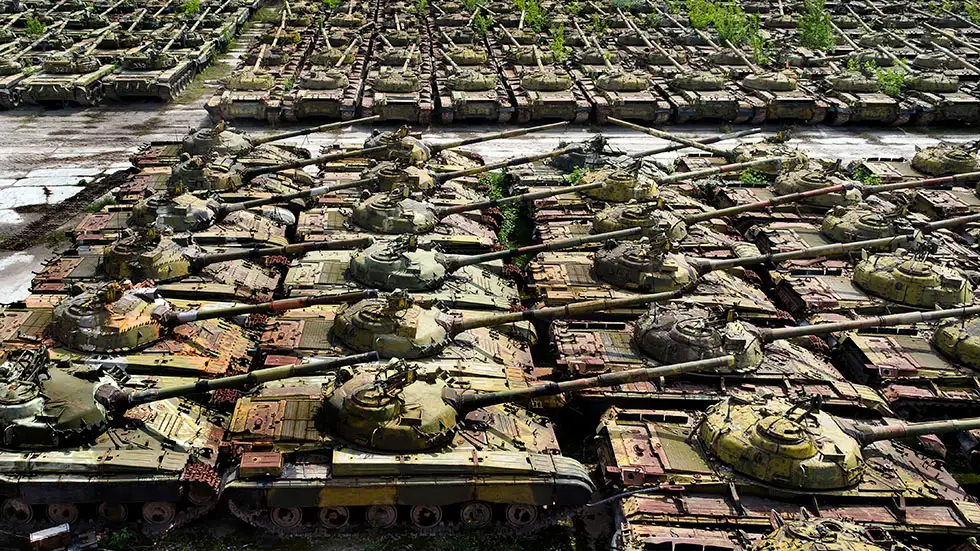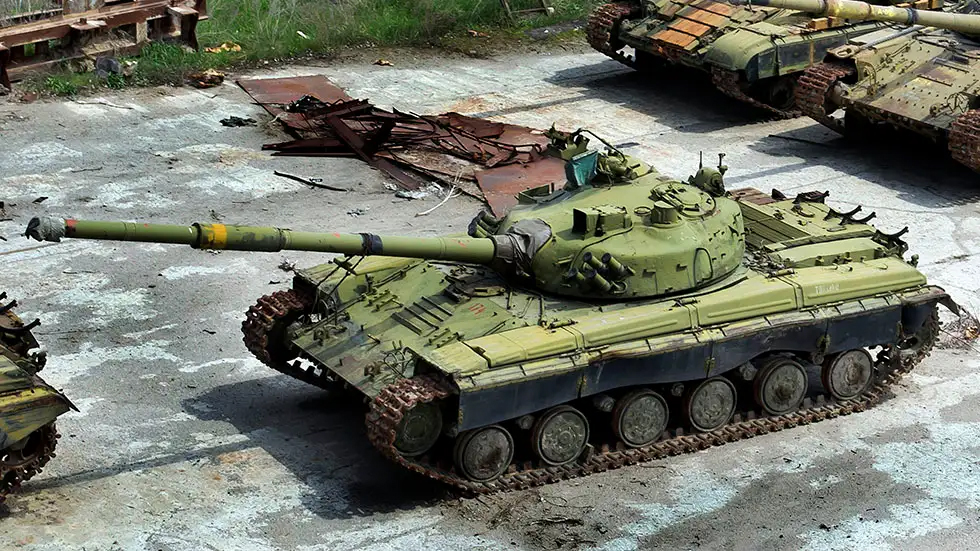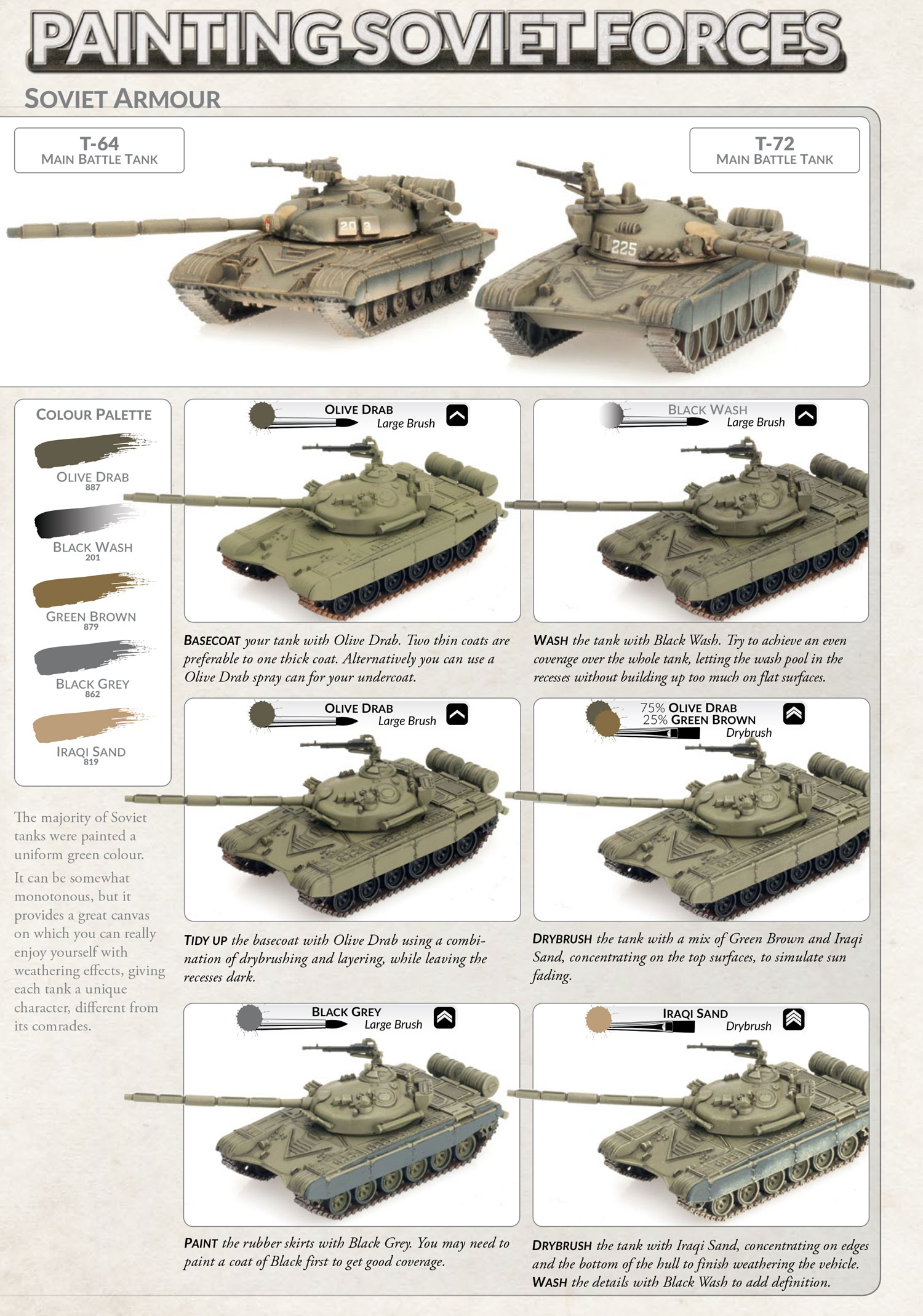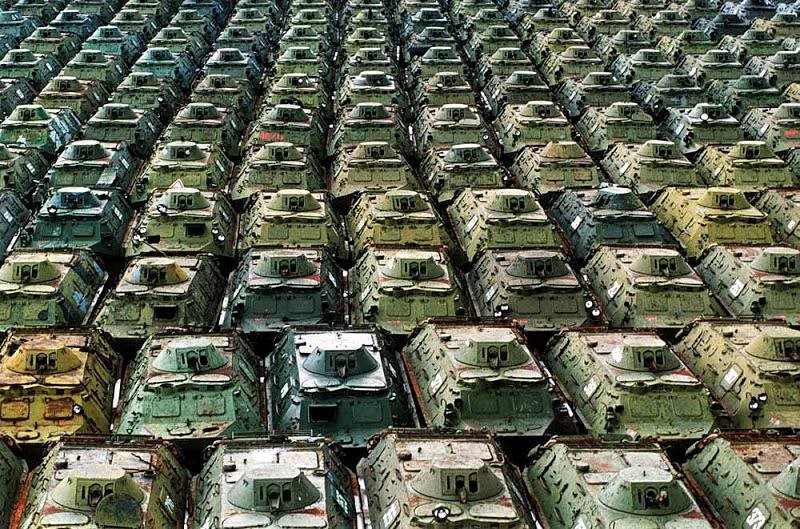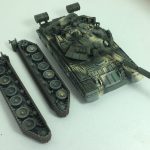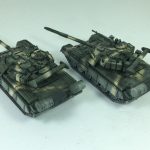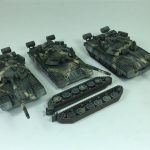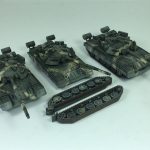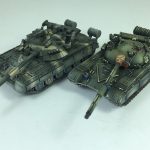With Chris and Evan
Soviet Green, for modellers at least, has been one of the hardest colours to quite pin down as to what it is. For Flames Of War gamers it is a bit like trying to determine what is the correct for German Dunklegelb.
Factors such as the specific time period, where the tank was built, whether or not it had been repainted in the field, and the amount of sun, rain and general use it had seen all had an effect on the final colour. Not to mention the human element involved in mixing the paint, to the same chemical formula but not quite the same ratios for each batch, and you end up with some significant variations.
These pictures are a great example of how different the Russian Green can be once time (and weather) has taken its toll.
So with all that in mind what is the correct green? We’ve suggested Vallejo Olive Drab (887) with a drybush of Green Brown (879) as an easy way of replicating this colour.
Personally I’ve used a mixture of colours over the years and, in my opinion, you should feel free to do whatever you think looks good. Just check out this photo that Victor found…
~Chris
Evan’s Take On Painting Russian Armour
I’ve already got a significant Soviet force for WWIII Team Yankee and the vast majority is plain green in colour. I’ve painted some scout BMPs with a basic sand camouflage pattern just to make them different from the infantry BMPs on the table but, until now, I’ve relied on rubber skirts, lights and some serious dusty weathering to brighten them up.
I like to start with a base primer coat of Vallejo Soviet Green primer and then go from there with some panel modulation and the rest of my painting system. I use this to keep my armour coherent on the tabletop but as we all know there is no real Russian/Soviet green that you must use to be accurate.
When the T-80 and BMP-3 arrived in the game I thought I would depart my tried and true plain green and go for a camouflage scheme to reflect the more modern AFVs in the game. I kept the Vallejo Russian green primer base but shifted to a more Olive Drab leaning green as a modulation colour to go with the sand and black camouflage pattern. The camouflage also extends down over the rubber skirts as well which is another first for my Russians.
I like to paint my armour with the tracks off if at all possible and you can do this with the T-80. After I’ve glued on the skirts I check fit the tracks to make sure they will fit later, to do this you need to insert the rear of the tracks at 90 degrees to the hull and then rotate upwards so the rear mudguard goes over the un-ditching log on the rear. Removing them is the opposite and the tracks will still be free to paint by themselves.
~Evan

